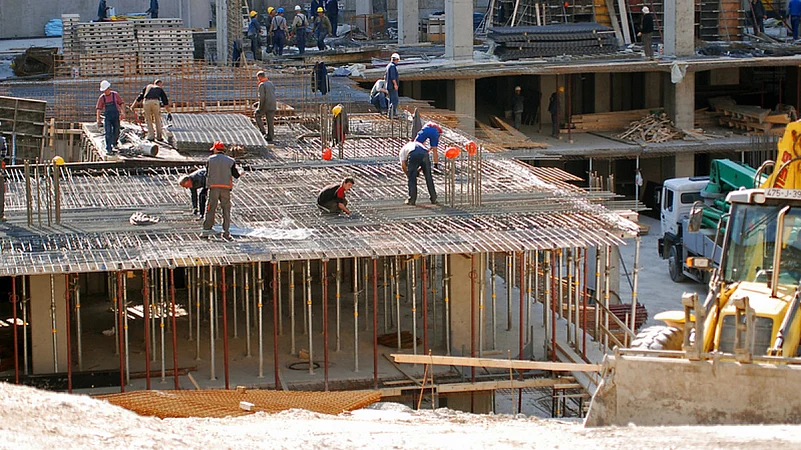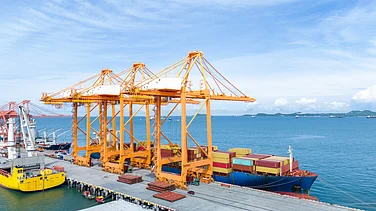Rising industrial production and urbanisation, two key drivers of growth in the Indian economy, are expected to contribute to a boom in the real estate and infrastructure industry. Aided by this boom, the construction sector, which currently accounts for around 8 per cent of the country’s gross domestic product (GDP), is likely to see steady growth as well.
As per available estimates, between 2010 and 2050, the nation’s urban population is projected to report a more than two-fold increase while the urban land cover is expected to quintuple. Going by the rising demand for urban development, India will have to develop 15 square kilometres of land every day till 2050 to achieve the desired levels of growth. However, this projected expansion is expected to have significant environmental ramifications, owing to the huge amounts of construction and demolition waste the sector is likely to generate in the process.
Already a resource-intensive sector, the construction and demolition industry is estimated to generate around 150-500 million tonnes of waste per year, according to a new report released by the World Resources Institute (WRI) India, Rocky Mountain Institute (RMI), and the Council on Energy, Environment and Water (CEEW). According to the report, titled ‘India’s Circular Waste Economy Potential for Sustainability’, the projected growth in the construction and demolition industry would lead to an exponential increase in waste generation from the sector.
In light of this, researchers of the report have emphasised on the importance of integrating circularity within the economy. Doing so, they say, would not only maximise the growth potential of several sectors but also advance India's efforts to achieve its sustainability targets.
The report has been prepared by three leading think tanks in collaboration with India’s G20 Secretariat to explore pathways to achieve circularity within the Indian economy. For this, researchers have identified seven key sectors where a transition from import-reliant, linear supply chains to a circular economy is feasible by relying on the principles of reuse and repurpose. Among the sectors included in this list are solar, batteries, steel, construction, agriculture, wastewater and municipal solid waste.
Construction and demolition waste refers to residual materials from activities taken up during construction, renovation, and demolition of buildings and infrastructure. Currently most of this waste, comprising concrete, masonry and soil, is either used for backfilling or dumped in vacant lands. Such practices have severe environmental and health impacts, including higher greenhouse gas (GHG) emissions, increased risk of air pollution and flooding, and soil contamination.
In the absence of a standard regulatory framework, construction and demolition waste management remains at a nascent stage in the country, with initiatives and measures operating in silos. The report therefore recommends a series of measures to advance circularity in the construction sector by focusing on proper waste segregation, local recycling and boosting marketability of recycled products.
Achieving Circularity
To ensure waste generated from construction is recycled, it is essential to establish a proper disposal mechanism. The sector, for instance, could enforce standard operating procedures across states and cities to ensure contractors handle construction and demolition waste properly. Researchers have also emphasised on segregation of waste at source, which would maximise the potential of reuse and recycling of construction materials.
The report also proposes planned destruction as a way to reduce waste generated by the sector, which could improve on-site segregation, thereby making the recycling process more efficient.
Moving on, urban local bodies could also contribute to improved waste management by allotting land for waste collection centres and recycling facilities across cities. Additionally, a cluster-based approach could go a long way in establishing a circular supply chain within the sector, noted the report. This essentially means ensuring that potential buyers are located near recycling and processing facilities, thereby avoiding transportation costs.
Expenses incurred from transport are usually a major concern, denting the uptake of recycled products in the sector. Establishing recycling facilities at strategic locations across the city could thus, say researchers, help bring down the cost of transportation, potentially lowering the net cost of such products for buyers and contributing to developing a solid supply chain. This could increase the overall appeal of recycled products in the sector, as well as improve sellers’ access to markets. Such micro-level interventions could significantly improve the overall process of construction and demolition waste management.
Policy Thrust Key
The 2024 Construction and Waste Management Rules set new benchmarks for recycling construction and demolition waste. Depending on the type of project, developers were asked to recycle up to 20-25 per cent of the total waste generated during construction in 2030-31. This is significantly higher than the previous threshold of 5 per cent in 2026-27. Researchers of the new report, however, say that further measures are required to achieve improve waste management efficiency in the sector. For instance, incentives can be provided for government and private agencies that set and achieve more ambitious targets, setting a precedent for other sectors.
Such measures need to be complimented with a policy framework that mandates the use of recycled products by including them in ‘Schedules of Rates’, which essentially refers to structured items and services listed along with their unit rates. These rates are used as a baseline for cost estimation, tendering and contract administration in construction projects. Additionally, mandates on recycled product utilisation should be incorporated in tender documents to encourage stakeholders to adopt measures advancing circularity.



























